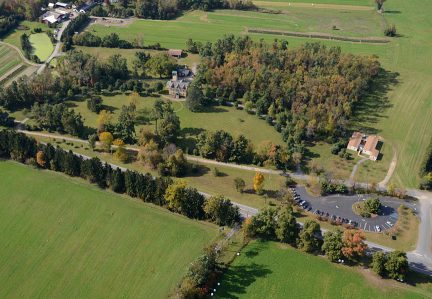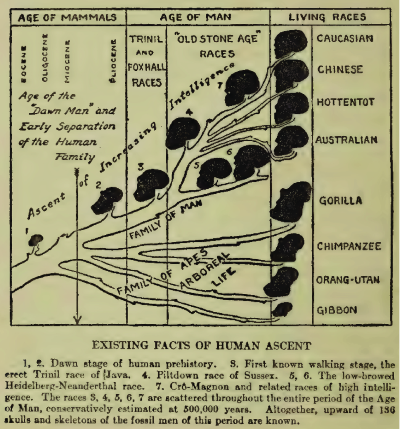
The report Imperiled Promises isn’t all doom and gloom. It does cite some examples of successful work already being done within the NPS prior to the recommendations listed in the report. In this post, I will focus on the examples primarily related to New York and offer some comments.
African Burial Ground National Monument
One success noted was the African Burial Ground National Monument in lower Manhattan. The discovery of the burial ground was a national media phenomenon in no way typical of historic sites. For one thing, it is a new site within the NPS and not a reconfiguring of an existing site. In the study, the authors cite “a remarkably inclusive, patient, and creative process of civic engagement” following the chance discovery of this burial ground north of the walled street that once marked the northern boundary of New Amsterdam. It functioned roughly from 1690 to 1754 and may have contained 15,000 burials. That civic engagement led to contentious discussions and negotiations before a mutually agreeable settlement was reached.
But while the establishment of the national monument site succeeded, the post-settlement process has been less than hoped for. I write this recognizing that the NPS staff who assisted the Lower Manhattan Historical Association (LMHA) in our Alexander Hamilton Immigrant Award Ceremony and parade on July 2 also manage this site. While the site does well with school groups unfortunately its location a few blocks north of Lower Manhattan and the security clearance required to entire the site of a functioning federal office building hinder its appeal with tourist groups. It would work as better as a stop on a New Amsterdam tour package or an African tour package. I suppose such tours do exist but in a general tour of Lower Manhattan where time is precious the extra few blocks and security procedures are a detriment.
Lewis and Clark National Historic Trail
One NPS success site mentioned with New York implications is the Lewis and Clark National Historic Trail. For the bicentennial of Lewis and Clark from 2003 to 2006, the NPS partnered with American Indian communities, state and local governments, the private sector, and other federal agencies. Why is this relevant to New York? We don’t have Lewis and Clark, but we do have William Johnson. His story touched upon many different peoples especially in the Mohawk Valley including Mohawk, Oneida, Onondaga, Cayuga, Seneca, Tuscarora, Palatine, Dutch, French, and English among others. Much of that activity occurred within the Erie Canal corridor so the NPS already operates in that area. But what connected the peoples wasn’t the canal but trails and roads just as Lewis and Clark used for their expedition, in particular, what is now Route 5. Perhaps the NPS could take the lead in organizing a William Johnson National Historic Trail and in bringing together the American Indian communities, state and local governments, the private sector, and other federal agencies to create such a trail. Is the NPS permitted to take the initiative and a leadership role?
American Revolution: Lighting Freedom’s Flame
On a larger scale, the study touts the NPS’s success with an American Revolution curriculum called American Revolution: Lighting Freedom’s Flame. The curriculum material is available free of charge to teachers and school systems and is accompanied with educational resources.
I noticed in examining the Fort Stanwix and the Saratoga Battlefield some web sites of locations in New York that there are lesson plans related to their respective battles. My sense is that the lesson plans are for the classroom and not for the school trips to the sites especially since they are available nationwide wherever the American Revolution is taught.
The curriculum and the lesson plans on the American Revolution raise several questions.
1. Is it the function of the NPS to be national experts on the story American Revolution? Here I go with the baseball term WAR, wins-over-replacement. In these terms it means what does the NPS add to the story of the American Revolution that isn’t being told elsewhere? Why should the NPS seek to tell the entire story of the American Revolution? What the NPS has are specific sites where critical events occurred. In my opinion, it would be more beneficial to focus on the story of those sites within the context of the larger story rather than to seek to tell the larger story. It’s not as if it isn’t told elsewhere and the NPS is filling a gap.
2. The story of the NPS sites in the American Revolution shouldn’t be told in isolation from other sites and wars. For example, Fort Ticonderoga and Fort William Henry, private sites near Saratoga, also are part of the story and that story is really a three –phased one including the French and Indian War and the War of 1812. In addition there are multiple small sites including just over the border in Vermont that are part of the story as well. When I did Teacherhostels/Historyhostels called Forts of the Empire State (week long) or the Battle of Saratoga (weekend), we visited many of these sites. Besides meeting with the Rangers and education curators at the other locations, we were exposed to the curriculum the local sites had to offer. Fort Ticonderoga has annual conferences on both the French and Indian War and the American Revolution combined with some touring; Fort Oswego, a state historic site covering all three wars also has conference. Here is an example where the NPS should be collaborating with related sites about the local story rather than try to be the experts on the national story.
3. Related to the above, how are teachers to become aware of what the NPS sites have to contribute to the story of the American Revolution? Fort Ticonderoga has teacher programs and has attended social studies conferences including making presentations. The mantra of “if you put in on the web, they will come” works with comical cat videos but not necessarily less funny curriculum.
Here is where state actions would be beneficial, at least in New York. Although we temporarily(?) no longer have a state history conference, we do have some state meetings. Even a session at the annual Museum Association of New York (MANY) conference dedicated to forts of the empire state would help bring together NPS, state, and private sites with a shared interest and stories to tell. Same for the Erie Canal. In fact, the NPS could even host not just a session but working conferences. To some extent, the Women’s Suffrage conferences held the past two years and the subject of two posts represent an example of bringing together a thematic segment of the history community involving an NPS site.
Martin Van Buren National Historic Site
The report positively cites the Martin Van Buren National Historic Site in Kinderhook for successfully bridging the gap between nature and culture. Its work on Van Buren’s post-presidential farming activities. One might add, considering the growth in recent years of the local farm products, this approach fits in nicely with the cultural developments in the Hudson Valley. One sees local produce in markets, restaurants, and supermarkets. In effect, Van Buren’s past efforts synchronize well with current practices.
Flight 93 Memorial (not in the report)
Kudos to Ranger Robert Franz for his work at an unexpected and tragically new addition to the NPS umbrella. He is the “interpretive park ranger” at the Flight 93 Memorial. His job is to tell the story again and again to visitors who often remember exactly where they were when they first heard about 9/11. He tells the story of the plane that crashed into a field and not into a building. One should note that he tells the story to people sitting on benches at the Flight 93 Memorial and not standing in the sun for 30 minutes.
Franz is a military veteran and a pilot who brings his background to his storytelling. He has those 30 minutes to tell the story. He has to keep his own emotions in check at certain portions of the story which he repeats day after day to new visitors. There are unscripted pauses in his storytelling. He listens as people in the audience share their own memories of the day. He tolerates the conspiracy “theorists” who question whether the crash even occurred. The Holocaust never happened. The people were better off in slavery than back in Africa. The moon landing is fake news. Rangers are required to maintain their cool. Maybe there should be special tours or places for those from the far side. Robert Franz says “Let’s roll!” and the 30 minutes are up. Time to move on the next place after stopping at the gift shop.
We are a storytelling species but that doesn’t mean everyone is a good storyteller. History sites needs them. How do you get them? How do you prepare them? The recommendations of the Imperiled Promises study are next.
Part I Imperiled Promise: History and the NPS (and OPRHP)
Part II Imperiled Promise: The State of History in the National Park Service
Part III Imperiled Promise: Recommendations





The idea that the New York African Burial was discovered by accident or by construction workers is false and what really happened is much more interesting. This is far from the first time the idea has been broached; let’s hope it is the last’
In an article published in the Council for Northeast Historical Archaeology Newsletter (March 2004) Joanne Castagna and Lattissua Tyler erroneously report on the circumstances surrounding the discovery of the New York City’s African Burial Ground. Their article claims that construction workers had a role in discovering this important site. Nothing could be further from the truth. The ONLY role of construction workers was to operate a trackhoe, to remove fill, under the continuous direction of archaeologists. The archaeologists were implementing an investigation carefully planned by the late, great, Ed Rutsch and his team from Historic Conservation & Interpretation, as I wrote in my letter in response.
In their article “St. Louis and NY Army Corps of Engineers Districts Partner On One of the Greatest Archaeological Discoveries of Our Time” Castagna and Tyler claim
“In 1991, GSA’s Northeast & Carribean Region headquarters in New York City began excavating for a proposed new federal government building in Lower Manhattan, between Broadway and Duane Streets. It was during the excavation that an 18th century African burial ground was unearthed. GSA hired archaeologists to investigate the find.”
This is simply not the way it happened. Instead, Ed Rutsch hired experienced historians and archaeologists to research the site and wrote a report long before construction began. Then a detailed plan for searching for burials was developed long before any construction. I defy Castagna, Tyler, or anyone else to prove this is not how it happened. This is not the first time this preposterous report has surfaced, let us hope it is the last. If someone documents how this great discovery happened they will find the truth is much more interesting than fiction.
Bill,
This is fascinating information. Do the people at the NPS know it? They get my blogs and have been very receptive to the ones on Imperiled Promise including the people in Manhattan who oversee the African Burial Ground.
Peter
Where is the research to support this?
If you are referring to the report itself, it can be downloaded for free as a PDF from the Organization of American Historians at
http://www.oah.org/programs/the-oah-national-park-service-collaboration/imperiled-promise-the-state-of-history-in-the-national-park-service/
If you have a more specific query about a particular point or observation, then some elaboration is needed.